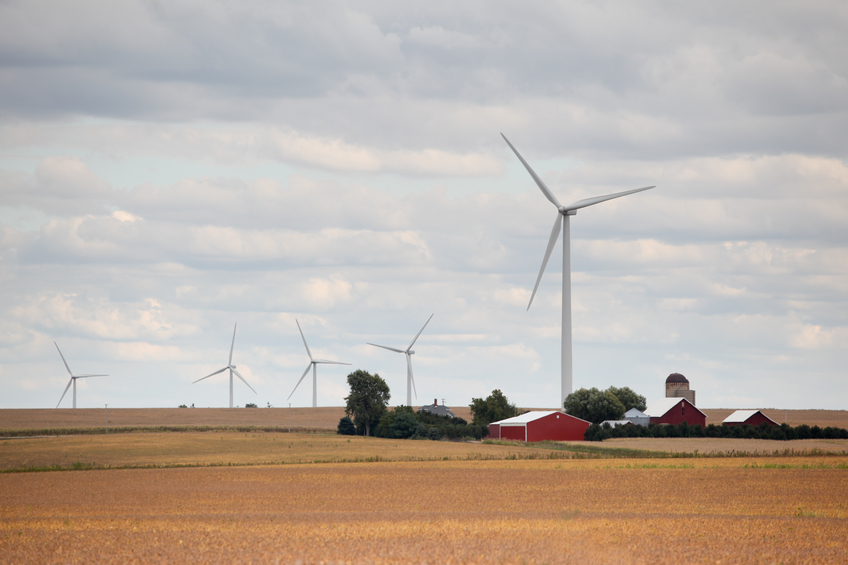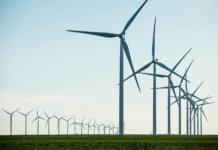The TechnoCentre éolien Gaspésie – les Ã�les, a Murdochville, Quebec-based organization dedicated to the advancement of Quebec's wind industry, recently inaugurated Centre CORUS, a new facility for wind power research. Centre CORUS, also located in Murdochville, a small community near the tip of the Gaspe Peninsula, will conduct research on the extraction of wind energy in cold climates as well as broader activities of wind energy development.
   Uniquely suited to the research goals of the new facility, Murdochville is situated at an altitude of 660 meters and features a mean wind speed of nine meters per second – a resource that contributes to a regional wind turbine capacity factor of 40%. Historically, Murdochville supported industrial mining and forestry, but the town has sought to revive its economic health after closure of its mining activities in the late '90s.
   "Large companies moved away from this region when resources ran out," explains Jean Desrosiers, general manager of TechnoCentre éolien, "and this had a significant impact on jobs. Members of the community saw wind farms being developed in the area, and they wanted more than a sprinkling of wind farms dotting the landscape. They wanted to make a significant impact on the economy and drive innovations."
   The Mount Copper wind farm and the Mount Miller wind farm, offering a combined capacity of 108 MW, surround Murdochville but are not located within the town limits. According to a representative of the TechnoCentre éolien, the developers of these projects have made donations to the town, and 80 wind industry-related jobs have been created in sectors such as components transport. In addition, the town is negotiating with a developer to become a partner on a new wind farm to be built in Murdochville.
   TechnoCentre éolien, established in 2000, has been a notable participant in the area's initiative to bolster the local economy, and the inauguration of Centre CORUS is another step in that initiative. Funding for TechnoCentre éolien and the Centre CORUS unit comes, in small part, from membership dues, while significant funding comes from the Economic Development Agency of Canada. However, the building that houses the research center – previously home to mining company Noranda – was ceded by Murdochville for the "symbolic sum of one dollar."
   The purpose of Centre CORUS is to provide affiliated researchers with an advanced research environment and specialized research tools through the assistance of the center's partners, including the University of Quebec School of Higher Technology, University of Quebec – Chicoutimi, University of Quebec – Rimouski, Cégep de la Gaspésie et des Ã�les, and Cégep de Matane.
   "We have identified one niche of the wind energy marketplace in which we can innovate," says Desrosiers. "We will help manufacturers specialize in cold weather climate products and help small businesses diversify through research and development support and applied research."
   A scientific committee will be responsible for assessing projects submitted to the center. Committee members include the center's scientific director, Redouane Megateli, as well as representatives from government, educational and commercial organizations.
   Research at the facility will focus on:
   * climate conditions, wind energy potential and field trials,
   * blade aerodynamics and wind farm simulations,
   * materials and processes, and
   * ice and de-icing techniques.
   Centre CORUS already has addressed research objectives to characterize icing conditions and compare the performance of instruments used in the wind energy industry under icy conditions.
   "The study of these instruments was not conducted in conjunction with the instrument manufacturers," explains Megateli, "but we will be conducting a new, larger study involving new instruments, and we have received some interest from manufacturers to have their instruments tested in our laboratory." The results of a collaboration between manufacturers and researchers, adds Megateli, will allow manufacturers to improve their products for cold climates.
   Researchers expect to begin a new measurement campaign this spring with the installation of a tower on Mount Needle at an elevation of 900 meters. Over the course of the next few months, Centre CORUS will develop four other projects areas, including:
   *    surface treatment to prevent ice formation,
   *    full instrumentation of a high-power wind turbine,
   *    biodegradable lubricants, and
   *    Canada's Wind Energy Research Network (WERN).
   The new network, initiated by the Natural Sciences and Engineering Research Council (NSERC) and led by NSERC chair of environmental design and University of New Brunswick professor Liuchen Chang, will gather together researchers, professors and students working on wind energy issues and problems, says Megateli. WERN will address themes such as icing issues and transport of wind energy.
   A new Web site for Centre CORUS will provide information for the public about the center's research activities and study results. "We will have the Web site up and running within the next two to three months," says Megateli, "and we plan to release new study presentations within eight months."



